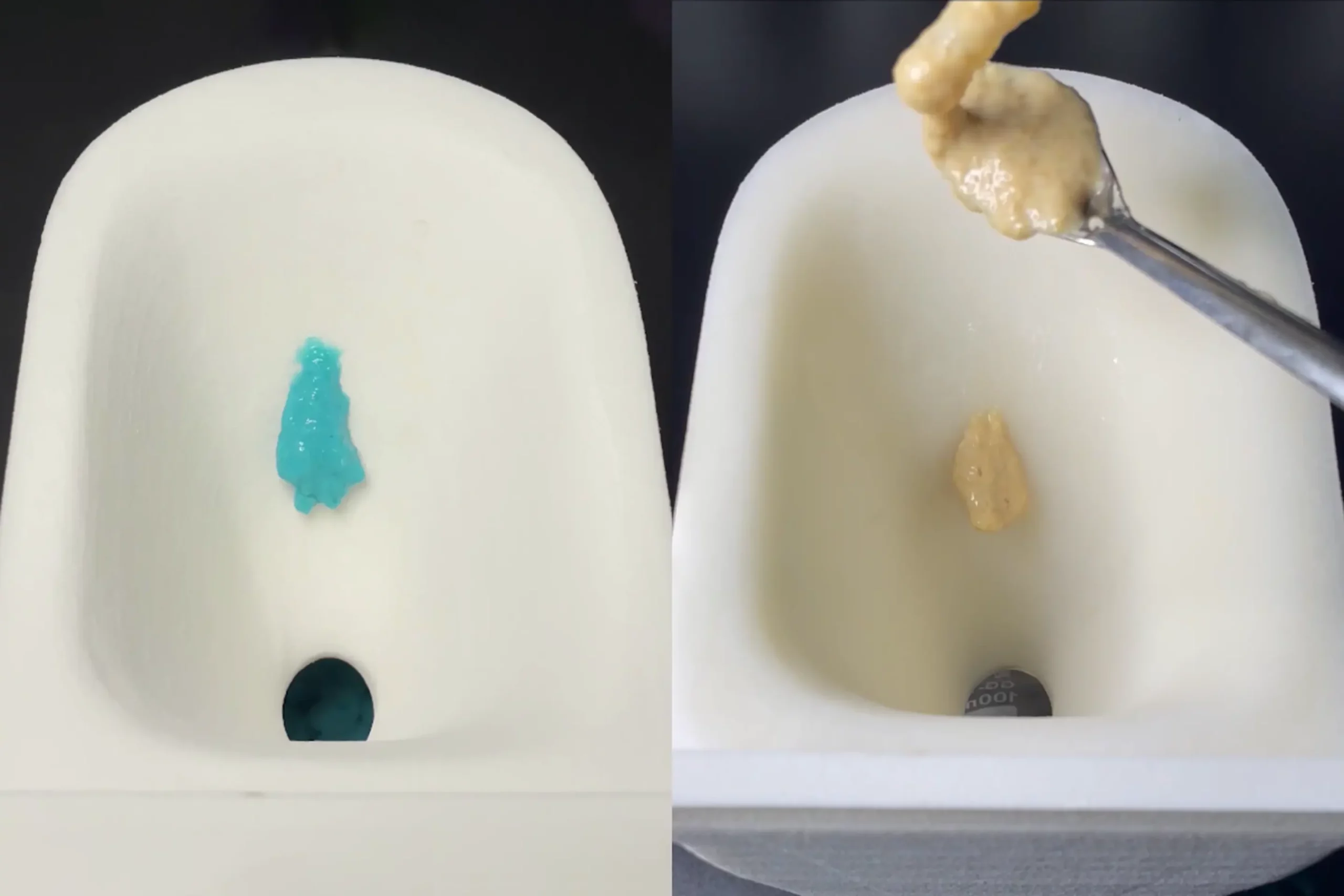
Although the humble flush toilet was invented in the late 16th century, it didn’t become widespread until the 1850s. Since then, this extraordinary invention that we all literally use every day has saved countless people from devastating diseases like cholera, dysentery, hepatitis A, typhoid, and polio.
It would be an understatement to say that we take toilets for granted. In fact, we loathe cleaning them after our less savory bodily fluids and waste get stuck on their surfaces. But this all may change in the not-so-distant future thanks to new research that has put a new twist on a 200-year-old design.
Researchers in China have developed a 3D-printed toilet surface so remarkably slippery that even after heavy use, virtually nothing clings to it. This high-tech toilet could be huge for water conservation, drastically reducing the amount of water required for flushing. But, let’s face it: its greatest contribution to society is finally making those horrid toilet brushes obsolete.
Slippery toilet surfaces are not new. Coatings like Teflon that line no-stick pans are often used to prevent material adherence, but their efficacy wanes over time due to wear and tear. With each use, the once-smooth surfaces lose their slipperiness, which means you have to spray a new coating or, more often the case, replace the product.
However, the new design presented by a team led by Yike Li from Huazhong University of Science and Technology in Wuhan, China, works very differently. They’ve designed a toilet surface that remains extraordinarily slippery even in the face of continuous abrasion because the entirety of the material repels all manner of organic matter, not just the surface.
A new era of restroom technology
The Abrasion-Resistant Super-Slippery Flush Toilet, also known by the apt shorthand ARSSFT, is a blend of plastic and hydrophobic sand grains meticulously 3D-printed. Through the employment of a selective laser sintering technique, researchers fashioned a self-supporting three-dimensional structure with a porous architecture that can be infused with lubricants.
The material was then bathed in silicon oil, which infiltrated through the pores. The oil’s deep penetration into the material ensures that it stays embedded, creating an extraordinary shield against even the most obstinate substances.
The researchers built a small-scale model of a toilet, one-tenth the size of a full-fledged version, which was subjected to a flush test. The prototype was exposed to the force of eight liters of water. The ARSSFT emerged unscathed, retaining its impeccable slipperiness.
Researchers then subjected its surface to 1,000 cycles of abrasive sandpaper treatment, and even employed a file and a Stanley knife to inflict deliberate harm. Astonishingly, the ARSSFT withstood these trials, emerging with its super-slippery capability fully intact. This durability stemmed from the presence of the lubricating oil that persisted beneath the surface, according to New Atlas.
However, the true test of the ARSSFT’s mettle awaited. Mud, milk, yogurt, honey, starch-filled gel, and even synthetic feces were hurled into it. Astonishingly, none of these substances adhered to the surface.
While the researchers at Huazhong University of Science and Technology currently have no immediate plans to enter the toilet manufacturing industry, the implications of their creation are far-reaching. While the treated material may prove too expensive for household users, such a toilet could prove perfect for public restrooms that have a very high usage rate. A lot of water and energy would be saved in the process.
“The reduced flushing volume would result in less wasted water during transportation to the processing facilities, thereby saving transportation costs,” Li told New Scientist.
The findings were reported in the journal Advanced Engineering Materials.









